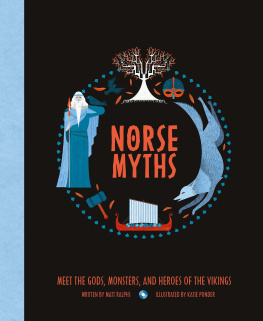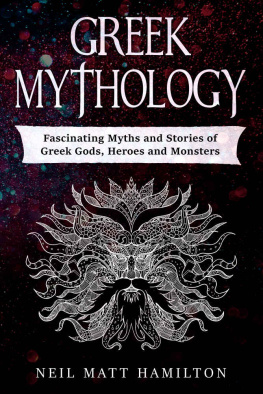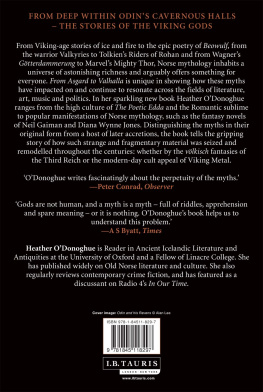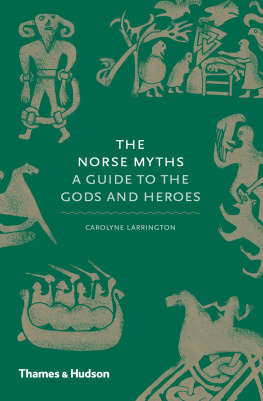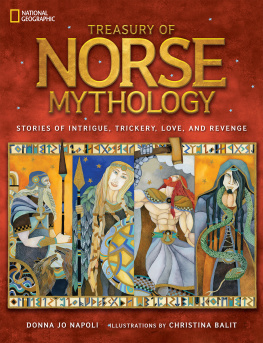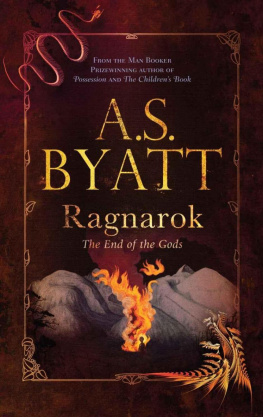
Text copyright 2015 Peter E. Aperlo. Illustrations copyright 2015 Valentin Ramon. Concept and design copyright 2015 Ulysses Press and its licensors. All rights reserved. Any unauthorized duplication in whole or in part or dissemination of this edition by any means (including but not limited to photocopying, electronic devices, digital versions, and the Internet) will be prosecuted to the fullest extent of the law.
Published in the United States by
Ulysses Press
P.O. Box 3440
Berkeley, CA 94703
www.ulyssespress.com
ISBN: 978-1-61243-520-6
Library of Congress Control Number 2015937568
10 9 8 7 6 5 4 3 2 1
Acquisitions Editor: Casie Vogel
Managing Editor: Claire Chun
Editor: Phyllis Elving
Proofreader: Lauren Harrison
Design: what!design @ whatweb.com
Production: Jake Flaherty, Sohayla Farman
Cover images: boat Santi0103/shutterstock.com, coins Route66/shutterstock.com, Viking man Catmando/shutterstock.com, grunge background HorenkO/shutterstock.com, gold background t_kimura/istock.com
Illustrations: Valentin Ramon
IMPORTANT NOTE TO READERS: This book is an independent and unauthorized fan publication. No endorsement or sponsorship by or affiliation with Rick Riordan, his publishers, or other copyright and trademark holders is claimed or suggested. All references in this book to copyrighted or trademarked characters and other elements of books by Rick Riordan are for the purpose of commentary, criticism, analysis, and literary discussion only. The works of Rick Riordan referenced in this book are publications of Disney Hyperion Books, and readers are encouraged to buy and read these books.
CONTENTS
Call them Vikings or call them Norsemen, chances are youve seen plenty of these guys in pop culture over the years. Movies, TV, books, and comics are filled with the thrilling and often bloody adventures of these shaggy, seagoing barbarians. And with them come amazing stories of heroes, gods, and monsters.
The characters and themes of Magnus Chase and the Gods of Asgard, the new series by Rick Riordan, are based on stories from Norse mythology. Author Rick Riordan is well known for his mythological adaptations. A former middle-school history and English teacher from Texas, he is the author of the popular Percy Jackson and the Olympians series of books.
For this latest series, Riordan introduces a hero named Magnus Chase, a young boy living on the streets of Boston. After years of not knowing who his father is, Magnus is told by a mysterious stranger that hes a descendant of one of the Norse gods. The world as he knows it changes dramatically as he is thrown into a world where the gods, monsters, trolls, and heroes of myth are real. His mission is to prevent Ragnarokthe end of the world.
The gods, giants, trolls, heroes, and happenings in Magnus new world are all based on classic tales straight out of Norse mythology. In these stories youll find crafty gods, brave heroes, and horrific monsters. Youve probably already heard some of their names, such as Odin, Thor, and Loki. Others may be new to youlike Bodvar Bjarki. Youll experience deeds that are comical as well as gruesome, some that are incredibly noble, and others that are simply mystifying.
From the creation of the world to the final battle between the gods and the forces of evil at Ragnarok, these are stories that are crucial to know if you want to fully understand the adventures and perils that lie ahead for Magnus Chase.
A thousand years ago, the Vikings and other people of northern Europethe region we now know as Scandinaviarecorded vibrant sagas and poems. They collected an impressive array of stories revolving around ancient myths and beliefsand amazingly, these were preserved at a time when many ancient tales were lost as the region converted to Christianity.
The Vikings themselves are often seen as lawless terrors and masters of hit-and-run tactics that made them the scourge of an entire continent. Looting, burning, and killing seemed to be their main pastimes, carried out with savage zeal. But what if that wasnt the whole story?
This book dispels some of the misconceptions about these fascinating people. Well show how their culture was every bit as sophisticated as the so-called civilized peoples around themand even more sophisticated in terms of the peoples voice in government, and sometimes even womens rights. Well explain how the Vikings built powerful kingdoms that challenged their neighbors on an equal footing. Youll see how, in the midst of the Dark Ages when most Europeans never left their villages, these adventurous Scandinavians explored and traded all the way from Asia across to North America.
Some elements may remind you of other traditions youre familiar withGreek, Roman, and Celtic, for example. But I think youll agree that the Norse myths have a certain energy and vitality that sets them apart. These stories hold a unique place in our shared cultural heritage and are worth dusting offwhether youre becoming reacquainted with them or just now discovering them for the first time.
Onward!
There was never an ethnic group called the Vikings. If you try to look up Vikingland on any map, ancient or modern, you wont find it. No one ever spoke Vikingish. Who, then, are these Vikings we see so often in books, cartoons, and movies?
The word Viking comes directly from Old Norsethe language they did speak. Vik means a small bay or inlet, while ing means a person. This Bay-Person was a pirate and a raider, someone who roved the seas in search of goods to plunder. Viking targets included monasteries filled with priceless gold and silver ornaments and relics; farmsteads rich with cattle, food, and even people to sell as slaves; and well-defended, walled towns ripe to be sacked. Sometimes the Vikings actually traded goods (ill-gotten or not) with the folks they encountered, rather than fight them.
VIKING VOCAB
Vik: bay or inlet
So, being a Viking was a job, not a nationality. For some it was a full-time lifestyle, while for others it was temporary, a grand adventure. Sagas are full of young men getting hold of a ship or two and leaving their farms in spring and summer for a Viking expedition. (You didnt even have to come from Scandinavia to do this. There are chronicles that tell of Danish people complaining about Vikings harassing ships in the Baltic SeaVikings who would have been Slavs from central Europe!)
The vast majority of the folks in northern Europe while all this was going on werent Vikings at all; they were farmers, artisans, tradesmen, wives, and fathers just trying to get byusually without slaying their neighbors. Saddling all the Scandinavians of this time with the term Viking would be a bit like somebody a thousand years from now referring to all Americans as the Cowboys or the Stockbrokers. Still, the Vikings were the most famous of the Scandinavians, and it was their sudden burst of far-flung raiding and trading that gives us the term Viking Age.
Exactly when the Viking Age occurred is open to debate, depending on your historical point of view. If you were on the pointy end of Viking violence, like the English, youd probably say it started in AD 787 with an attack on a royal official and his men at the Isle of Portland, and it ended with the last invasion by a Norwegian king in 1066. (This is not the famous invasion by William the Conqueror that you might have read about, although William was a descendant of Scandinavian Vikings!) From the Danish point of view, on the other hand, you might look at the Viking Age from a commercial standpoint, starting with the founding of the first market towns around 750 and ending with the destruction of a major one of those towns in 1050 by a Norwegian king. (Yes, the same one who attacked England in 1066more on him later.) But essentially, if you found yourself in Europe roughly between the years 800 and 1100, youd be in the midst of the Viking Age and probably should learn to defend yourself.



